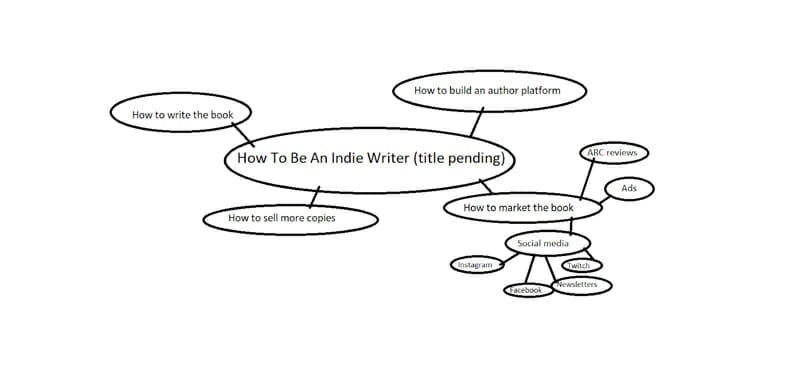Are you an absolute expert on cooking for a big family on a budget? Have you suffered a tragic loss and came out on the other side of grief? Did you have the perfect method for training a new puppy while helping your older dog acclimate to the new addition?
Is there something that you are such an expert on that your friends turn to you for help before Googling it themselves? Do you want to share that wisdom for a neat paycheck?
Maybe writing a self-help book is for you!
Let’s get into:
What is a self-help book?
A self-help book is a reference book for people struggling with a particular issue. It could be self-help for organizing your house, finding peace with a death in the family, finding your own confidence, starting a business from your home, potty training your kid, potty training your dog, potty training your rabbit, etc.
Self-help books are wildly successful because they essentially have a built-in audience. If you write a self-help book for parents who are struggling to breastfeed, your audience is any parent struggling to breastfeed and any overbearing in-law who THINKS a parent is struggling to breastfeed. An inherent audience is a very strong thing.
Why would you want to write a self-help book?
You might want to write a self-help book if you’re an expert at something that you’ve already struggled with. If you had to go through something, learn from it, and move forward with your life after overcoming that obstacle, you might feel inclined to help others who are struggling with the same issue. That’s where a self-help book comes in.
If you want to use your knowledge and experience to help others, and you’ve got the time and the will to put it together, a self-help book could be your gift to the world. So where do we start?
How to write a self-help book
Here are 8 things you might consider incorporating into your writing process to create a stellar self-help book.
Be an authority on the topic
Like I said, the impulse to write a self-help book usually comes from having overcome whatever obstacle the book centers on. Even if you’ve gone through it, did you go through in a way that was successful or enlightening?
Even if you’ve personally experienced an issue, you should be fairly researched on it before writing a self-help book from a place of authority. Interview other people who have gone through similar things, read existing books on the topic, research studies and data related to it–become an expert on that topic.
Read lots of self-help books
Apart from being an expert on your subject matter, it’s also helpful to understand the format of a self-help book. Will yours be interactive? Do you give the reader homework? Or is it more a reflection on your own journey, what worked and didn’t, and what you would have done differently?
You’ll want to do a few things here:
See what other authors have done that you liked, and make note of what you would do differently.
Consider how your book will contribute something new. What insight or information will you bring to the market with your content?
Read lots of self help books in your topic or niche, but also try branching out.
See how authors of other topics handle information.
Maybe you’re writing a book on the emotional attachment to food, but you found the way a research writer formatted data to be helpful, so you emulate a few of their presentation tactics.
Make it reader-centric–not about you
If you’re exclusively writing a story about your own struggles, that might not be a self-help book–it might be a memoir. If you’re taking your personal experiences and using them as examples for readers to understand the subject matter more clearly, that’s likely a self-help book. Write about your experiences in the way that it relates to the reader and to the universal issue.
Know your target audience
You can take the same topic or content and write for different people. The book “How To Handle Bullying In High School” and “How To React When Your Kid Is Being Bullied” are about the same thing, but they’re written for different perspectives. You’d write different advice to the child than you would to that child’s parent. Knowing your audience will help you in drafting your book.
Assume your reader is starting from a place of no subject knowledge
If someone picks up a particular book, it’s likely they already know a little on the topic, or they’re at least interested in it. But assuming your reader has a knowledge base while writing a self-help book can be a BIG misstep. There will certainly be readers starting with no knowledge, and at the very least, everyone could use a refresher on the basics.
Write your book with a completely ignorant person in mind. Catch them up from 0 knowledge to the place your book fits in. For example, if you’re writing a psychology self-help book about how to manage the grief of a lost pet–you wouldn’t jump right to the pet loss: You’d likely start with basic grief psychology. You’d catch the reader up on how brain chemicals shift, symptoms that could flag an issue, and common intuitive coping skills.
Assume your reader is starting with no knowledge so your book can provide the full spectrum of context needed to digest the information.
Outline
While novel-writing provides the opportunity for “pantsers” to thrive, self-help books typically require more organization. Readers don’t often buy self-help books for leisure–they’re here to learn, and they’re ready to get to the point. If you don’t outline, the result is often a meandering book, and you will lose readers.
Outlining before you draft is imperative, but there are several different ways to approach a self-help book outline. When it comes down to organization, this is the standard self-help format:
Intro chapter
Like I said, assume your reader is starting with no knowledge of your information and topic. What does a complete novice need to know? Introduce the concept and stoke the pain. Show them that they have a problem, and assure them that you have the solution. Also assure them that you are an expert on the topic, and explain why you wrote the book.
Lay out the process
This might be accomplished through good chapter titles and a table of contents, but give your reader the lowdown on what you’re covering. A brief chapter about the process might be helpful.
Pain building
Typically the first substantial chapter of a self-help book is about the problem. The writer gets into detail about the issue, the extra problems that stem from that issue, and the possible bleak future if the issue isn’t addressed.
If the book is on how to keep a tidy house, why is that important? What happens if they don’t have a clean house? What do they stand to lose? How does it impact other parts of their life? Spend the first bit of the book really shining a light on the problem and its subsequent symptoms.
Introduce the solution
How will you teach them to keep a tidy house? What is your foolproof strategy? It’s often helpful to include examples of people who have been helped by your process, even if that person is only you. Specific examples of the pain, the solution, and the happy ending can increase the believability and effectiveness of your book.
To the process
The rest of the book is for walking the reader through your process. Each chapter should be dedicated to explaining a step of the solution, in great detail with examples.
Tie it up
End the book on a positive, encouraging note. You’ve equipped your reader! They’re about to change their life! Throw in some success stories, give your final pieces of advice, and wish them the best of luck. If you’re writing your book as a puzzle in a larger plan (like if you are also offering a course), don’t forget to use the end of your book to funnel clients to the next place you want them to be.
Come up with a catchy title
Titles sell books. You want a reader skimming spines to see your title and know exactly what it’s for. Get specific, but also keep it catchy! This is often accomplished with a clever title, then a transparent and thorough subtitle.
Here are some good titles I’ve seen in the self-help genre:
- First Generation Father: How to Build a Healthy and Happy Home When You Come From a Broken One
- The Subtle Art of Not Giving a F*ck: A Counterintuitive Approach to Living a Good Life
- Why Do I Do That?: Psychological Defense Mechanisms and the Hidden Ways They Shape Our Lives
- You Are a Badass: How to Stop Doubting Your Greatness and Start Living an Awesome Life
Your title and cover will make most of your book sales for you, so definitely invest the time and money to come up with some killer front matter.
Consider adding homework
Give the reader actionable plans. This can be more conducive to lessons sticking, plus it will put your content in a hands-on context, making it easier to comprehend. Telling a reader why they should do something is great, but showing them by giving them assignments to perform on their own can help them see the difference your advice will make on their lives.
But how do you come up with ideas for self-help book content?

Well, I can’t help you pick a topic, but I can help you brainstorm!
Try a mindmap
Mindmaps are a tool to help you visualize and brainstorm different topics. For example, if I’m writing a book called How To Be An Indie Author (awful title, don’t do that), I might come up with the topic of “how to market your book” then from there I’d branch into several topics–say one is “social media.” From “social media,” I could branch to Instagram, Facebook, and newsletters. So we have our book (How To Be An Indie Author), our section (How To Market Your Book), our chapter (Social Media), and our headings (the different forms of social media). Each of those topics can branch into SEVERAL others, so mindmapping is an effective way to connect and develop many ideas.
Think of 10 to 20 questions your reader might ask about this issue or topic
This is a great exercise for instructional or self-help books–put yourself in your reader’s shoes (or in your own shoes before you overcame this obstacle), and ask the questions that person might ask. If your book is on potty training a toddler, what questions would a first-time parent ask? How to transition from sitting in a trainer potty to standing at a toilet? How do you teach a child to wipe? What do you do if your kid keeps playing with the toilet water? If it was my cousin, they’d definitely ask, “Why did my child scream when I tossed a cheerio in for him to aim at? I thought this was good advice. Why’s he still sobbing?”
Talk to other people
Find support groups or individuals who are suffering from the problem you’re trying to solve. Interview them about what they’re stuck on, what they’ve already tried, what has worked and what hasn’t. Get as many perspectives on the issue as you can, and take careful notes.
Do your research and ensure you’re an authority on your topic, create a strong outline, and get your first draft out! Self-help books are one of the highest selling genres, and they’re fairly simple to write. Ready to get started?
